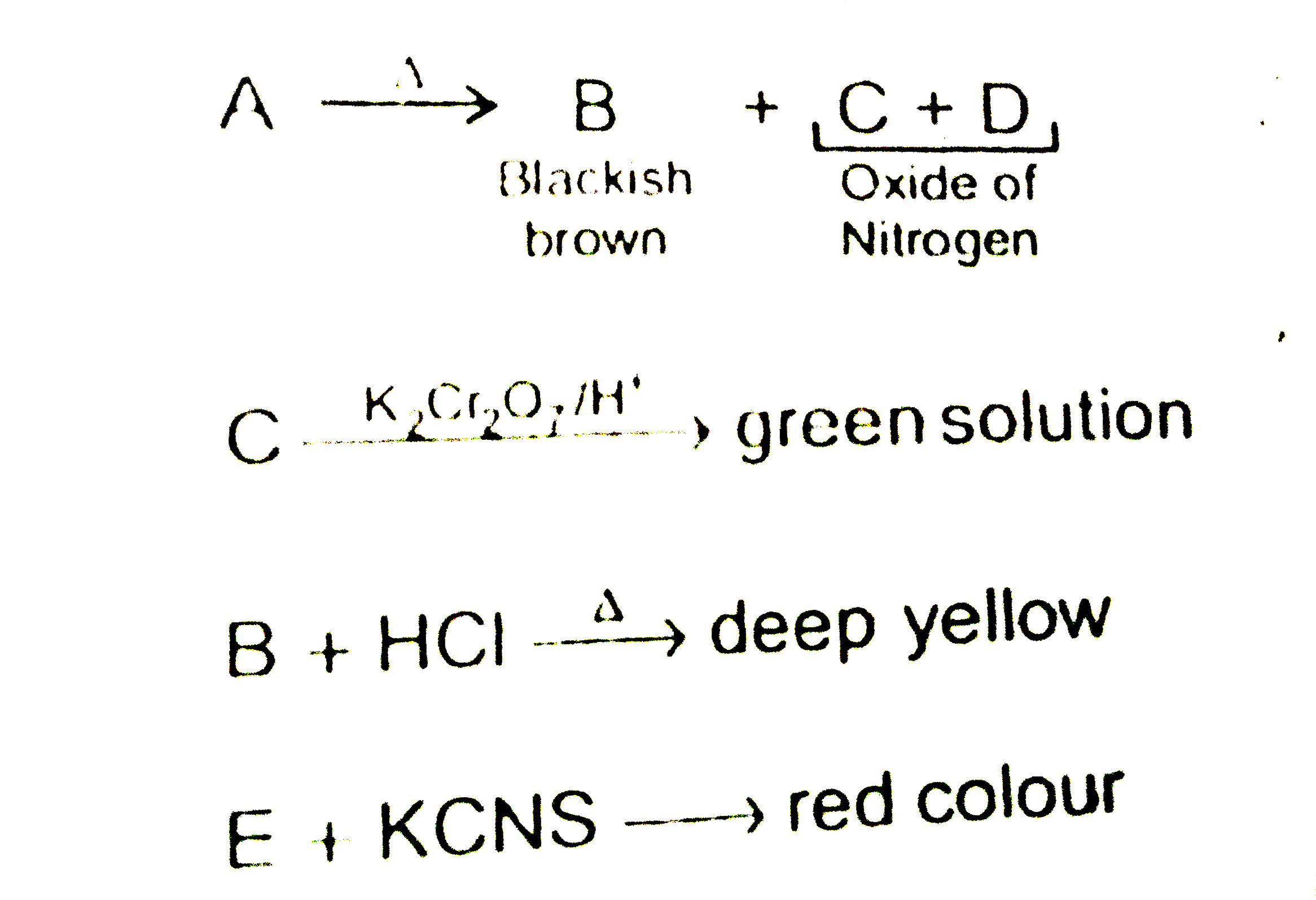On cooling hot zinc oxide, the yellow colour become white. Why ?
To understand why the color of zinc oxide changes from yellow to white upon cooling, we can break down the explanation into several steps:
1. Understanding Zinc Oxide Composition:
- Zinc oxide (ZnO) is composed of zinc ions (Zn²⁺) and oxide ions (O²⁻) in a 1:1 ratio.
2. Heating Zinc Oxide:
- When zinc oxide is heated, it undergoes a process where it can lose some of its oxygen and electrons. This results in the formation of a non-stoichiometric defect known as a metal excess defect.
3. Formation of Color:
- The loss of electrons creates an excess of Zn²⁺ ions. These free electrons can absorb light, particularly in the blue region of the spectrum.
- When blue light is absorbed, the complementary color that is perceived is yellow. Thus, hot zinc oxide appears yellow due to this phenomenon.
4. Cooling Zinc Oxide:
- Upon cooling, the reverse process occurs. Zinc oxide begins to regain its oxygen, restoring the stoichiometric ratio of Zn²⁺ and O²⁻ ions.
- As the excess electrons are removed and the non-stoichiometric defect is eliminated, the zinc oxide returns to its original state.
5. Final Color Change:
- With the restoration of the stoichiometric ratio, the absorption of blue light is no longer significant, and the material appears white again, which is the natural color of zinc oxide at room temperature.
Conclusion:
Thus, the yellow color of hot zinc oxide changes to white upon cooling due to the restoration of its stoichiometric composition and the removal of excess electrons that were responsible for the yellow color.
---
- Zinc oxide (ZnO) is composed of zinc ions (Zn²⁺) and oxide ions (O²⁻) in a 1:1 ratio.
- When zinc oxide is heated, it undergoes a process where it can lose some of its oxygen and electrons. This results in the formation of a non-stoichiometric defect known as a metal excess defect.
- The loss of electrons creates an excess of Zn²⁺ ions. These free electrons can absorb light, particularly in the blue region of the spectrum.
- When blue light is absorbed, the complementary color that is perceived is yellow. Thus, hot zinc oxide appears yellow due to this phenomenon.
- Upon cooling, the reverse process occurs. Zinc oxide begins to regain its oxygen, restoring the stoichiometric ratio of Zn²⁺ and O²⁻ ions.
- As the excess electrons are removed and the non-stoichiometric defect is eliminated, the zinc oxide returns to its original state.
- With the restoration of the stoichiometric ratio, the absorption of blue light is no longer significant, and the material appears white again, which is the natural color of zinc oxide at room temperature.
Thus, the yellow color of hot zinc oxide changes to white upon cooling due to the restoration of its stoichiometric composition and the removal of excess electrons that were responsible for the yellow color.
Similar Questions
Knowledge Check
- Question 1 - Select One
ZnO shows yellow colour on heating due to
AZn2+ ions and electrons move to interstitial sites and F-centres are calledBoxygen and electrons move out of the crystal and ions become yellowCZn2+ again combine with oxygen to give yellow oxideDZn2+ are replaced by oxygen
Name the yellow coloured pigment present in urine.
View SolutionWhich of the following metal oxide is white in colour but become yellow on heating
View Solution
The compound responsible for deep yellow colour isView SolutionGive reasons why?
Commercial concentrated nitric acid is yellow in colour but when it is diluted with water, it turns colourless.View SolutionA simple microscope using a single lens often shows coloured image of a white source. Why?
View SolutionWhy does white zinc oxide on heating become yellow ?
View Solutionsodium peroxide which is a yellow solid, when exposed to air
becomes white due to the formation of:View Solution

